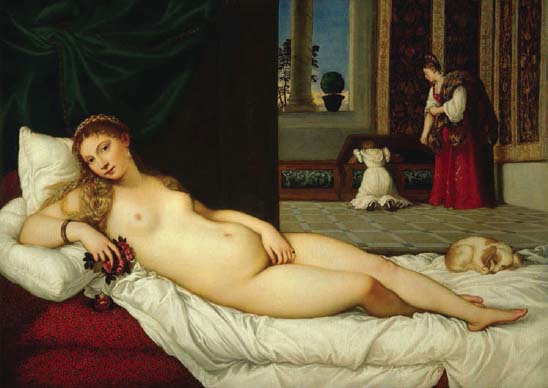The Early Modern World, C. 1300–1600Renaissance Venice |
What is the Venus of Urbino? |
Titian painted the Venus of Urbino for Guidobaldo della Rovere, the Duke of Urbino, in 1538. The painting is unabashedly erotic, depicting a nude woman reclining on a disheveled white sheet covering deep red cushions. Her long, red hair sweeps around her neck and her hand rests gently along her hips, only partially covering her sex. She stares teasingly from within the frame, a tiny dog curled near her feet. In the background of the painting, two women appear to be rifling through a chest, collecting clothing. There is no question, Titian has created a goddess. The provocative painting, part of a long tradition of female nudes in the history of art, influenced artists even hundreds of years later. Manet’s similarly bold, Olympia (1863), would not exist without the Venus of Urbino.

The artist Titian was a master painter from the northern Italian city of Venice. His work The Venus of Urbino (1538), carries on the tradition of depicting the reclining female nude and incorporates Titian’s characteristic preference for deep-red color.
